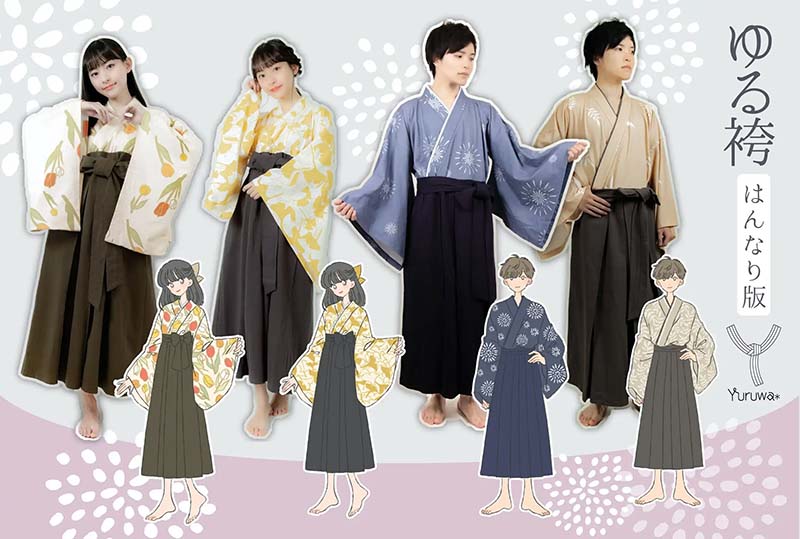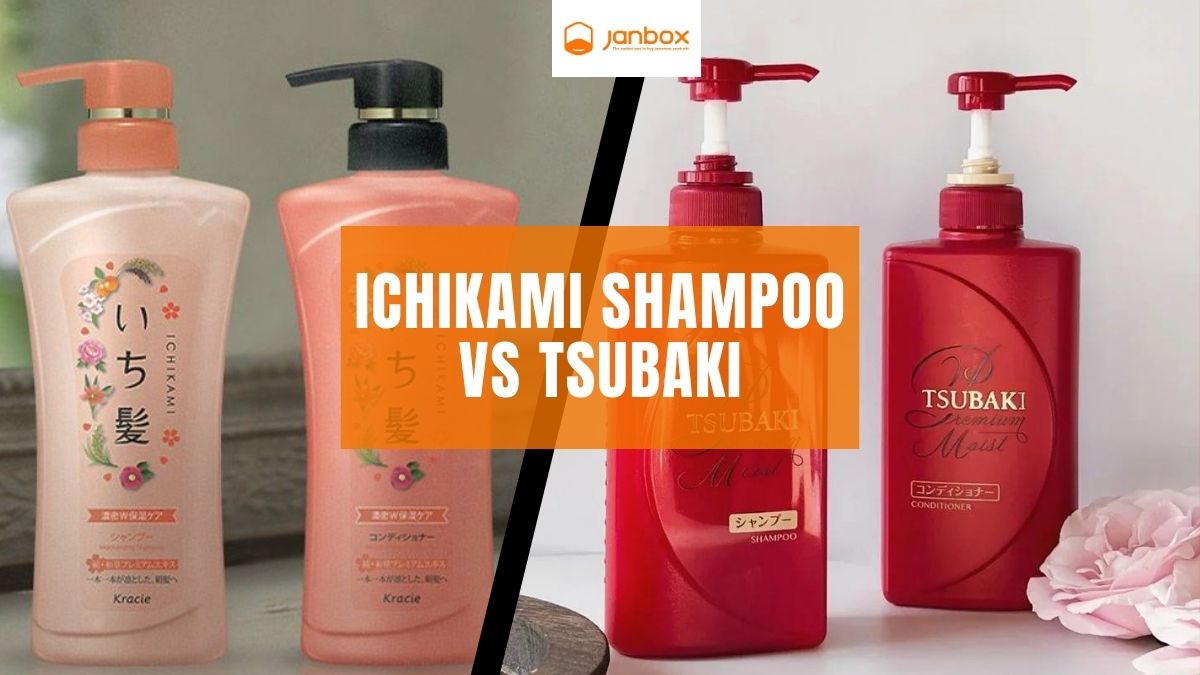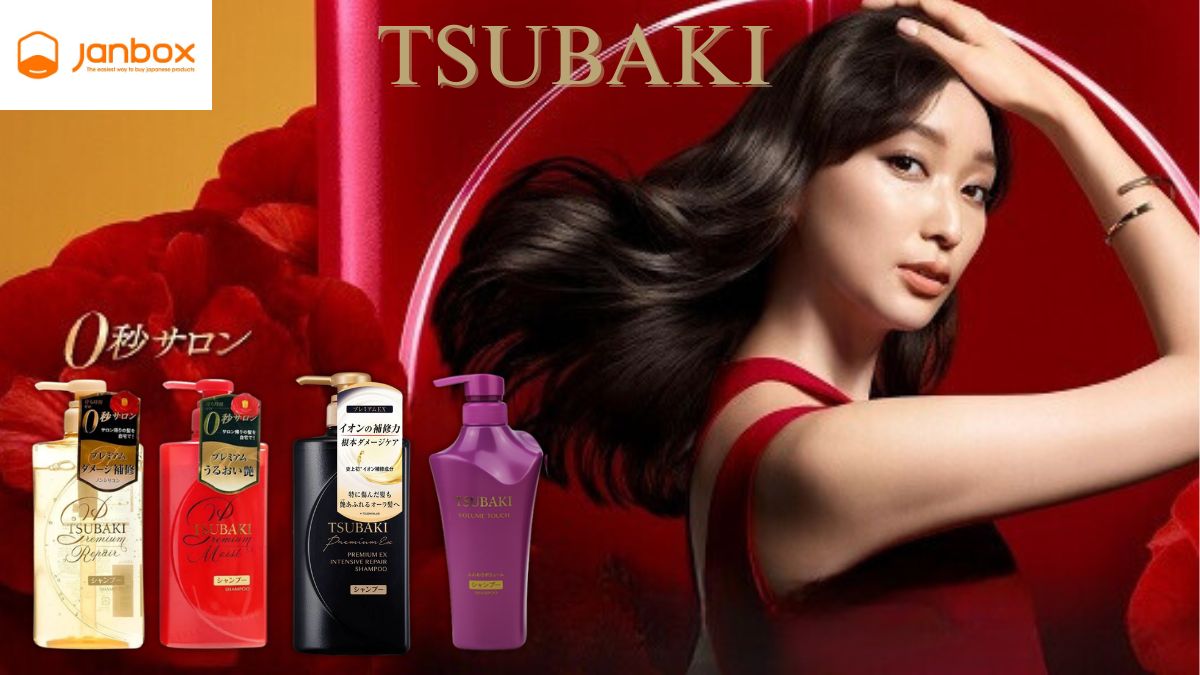While kimonos are increasingly well-known to the international public, the Hakama – a pair of pants that is often worn over, is not as well recognized. It’s a classic piece of samurai clothing, and it was designed to keep a horseman’s legs safe. However, nowadays, it is typically designed for different styles and purposes. After reading this article, you will be an expert on Hakama.
I. What is a Hakama?
Hakama (袴) refers to a traditional Japanese garment. Originally, it means traditional Japanese formal wear that consists of loose pants with lots of creases up front. A pair of Hakama can be knotted around the wearer’s waist and typically falls to the ground just above the ankles.
Hakama are secured using four straps (himo), two of which are longer and attached to the front of the garment, and two of which are shorter and attached to the back. A koshiita is a hard trapezoidal part that may be sewn into the garment at the back. Below that, on the inside, is the Hakama-dome (腰板), which is tucked into the obi or himo at the back and aids in keeping it in place.

In the past, traditional pants are worn with sandals and tabi (split-toe socks). While wearing a full kimono can be inconvenient, it allows the users to take steps without worrying about ripping the garment.
Traditional Hakama were worn by both men and women, but men wore them more commonly since they were better suited for riding horses and running. Farmers and merchants rarely wore it, although samurai and people participating in Shinto ceremonies or connected to shrines did.
Aikido Hakama generally have 7 distinct pleats, which are reckoned to be represented the 7 virtues of Bushido. Thus, martial arts schools typically prefer wearing aikido one; Some schools only allow black belts as well. Today, they are availably popular in Japanese as well as in the global eyes. Although prices of them can be varied, a high-quality traditional aikido Hakama typically will be the most expensive.
II. History
The Western fascination in Kimono Hakama, which are pants like those worn in Japan, comes as a bit of a surprise to us. They come in a variety of styles, depending on whether you’re talking about traditional kimono wear, sex, or martial arts like kendo and aikido.
In the Edo era (17th to mid-19th centuries), the Haori and Hakama were the standard clothing for Samurai. By the Taisho period, young women’s fashion had settled on the Meisen kimono and Hakama skirt as the standard image of the fashionable student (1912 – 1926). Women’s Hakama styles faded out after the 17th century as the haori and they became the standard formal wear of Samurai.

From the age of five, as remembered in Shichi-Go-San, a boy would begin wearing his first pair of them; a similar practice, called “breeching”, was seen in Europe up to the Victorian age, when boys would begin wearing breeches instead of gowns as an acknowledgment of coming of age.
However, it saw a renaissance in the middle of the 19th century when it became the standard formal attire for female students. One could argue that when more and more girls started attending college, official school uniforms became necessary.
Similar to the frisode worn at a coming-of-age ceremony or the bride kimono worn at a wedding, this style is worn only once by modern young women: at their college graduation. Many young women rent it and pair it with Frisode during the graduation season in May.
>>> Read more: Everything about Japanese Indigo Dye
III. Characteristics of Hakama
Any kimono style (except from Yukata) allows for the wear of Hakama. They were once reserved for men only, but nowadays, both sexes sport this trend.

1. Hakama kimono male
While Hakama used to be a required part of men’s wear, in modern times men usually wear it only on extremely formal occasions such as tea ceremonies, weddings, and funerals. They are also regularly worn by practitioners of a variety of martial arts, such as Karate, Kendo, Iaido, Taido, Aikido, Ryu-te, and Kyūdō.
2. Hakama kimono female
They are worn by women only at graduations and in traditional Japanese sports like Kydo, Aikido, and Kendo. Miko shrine maidens, who help at Shinto shrines with upkeep and ceremonies, are the most well-known examples of women.
IV. Hakama pants material
Although traditional pants are accustomed to stiff silk in the past, a more modern form can be manufactured from just a piece of medium-weight cotton fabric.
In the early days, they were typically crafted from Aizome-dyed (indigo) cotton. Like regular denim dye, Aizome begins with a purple hue but quickly fades to a more typical blue hue. With the advent of cheaper synthetic dye, non-bleeding black and navy entered the market, replacing the more traditional Aizome, which has the huge advantage of absorbing odors but is exceedingly hard to maintain.

They were also a pain to keep up with because they were too heavy for the muggy weather in Japan and the pleats wouldn’t stay put. It didn’t take long for the production to start using synthetic materials, notably Tetron, a blend of polyester and rayon. The Tetron is created by Toray, a Japanese business, and it is incredibly cost-effective. It’s 3 times cheaper than cotton, as well as being 3 times as strong, and the pleats in your clothes won’t wrinkle or rip when you wash them.
The benefits, however, were not without costs. Dull in tone and considerably lighter than cotton, this fabric still has some drawbacks. This opened the door for the introduction of a shiny, hefty polyester Hakama that still acquire the same benefits.
At the same time, the extremely hot and humid weather in Japan necessitated the development of the “Polyester-linen” super light, which filled the final “gap” in the market. The polyester and linen blend makes the fabric quite sturdy despite its delicate appearance. It’s easy to take care of, lightweight, and dries quickly.
V. Types of Hakama
Originally, they were worn by the samurai, enabling them to mount horses easily and protecting their legs while riding. It is commonly mistaken that the aikido were worn by the samurai in order to hide stances and foot movements from the enemy. When facing battle, however, the samurai actually would take the long ends of the garment and tuck them into a belt to enable quicker and more accurate maneuvering during the fight.
In the present days, there are 2 types of Hakama: one with divided legs, known as Umanori (“horse-riding”) and undivided, dress-like, Andon Bakama (“lantern”).

The divided style is used more for those who need flexibility with their legs for such activities as horseback riding. The undivided Hakama have a looser waste and tighter legs; this style is mainly worn by field workers and farmers.
The most popular type of them worn today are the divided Hakama . As its name implies, they have two separate chambers of cloth for the legs, similar to pants, whereas the undivided ones are designed as one piece and tend to resemble a dress. While Hakama today are mainly worn by practitioners of aikido as well as other martial arts, they are also worn in ceremonies and even in everyday life.
VI. How to wear Hakama?
Tying a Hakama is a serious ceremony with strict rules in the Land of the Rising Sun. Especially when training in a martial art, one does not bother to knot his pleated pants. Thus, the process of wearing it is solemn and ritualistic, necessitating one’s full attention and strict adherence to a set of norms.

First, put both legs inside the one, making sure to bring the garment up over the right legs by focusing on the inner border. To wear it, grab the long belts in front and hold them. The top should be pulled up to expose the stomach.
Then, wrap both of the front belts around your back, all the way around to the front of it, and then back around to the front again. Afterward, bring the belts around to the back of it once again and tie a bow knot, making sure the right belt is crossed under the left one just below the upper edge.
Back straps are brought around to the front of it and re-crossed under the upper edge, this time with the left strap under the right. Fifth, loop the right rear Hakama belt through the left rear belt and the front belts and then tie a knot on the front belt.
Lastly, Thread the tails of the rear belts through the top belts on the opposite side, then tuck them behind the its back. That completes the process.
>>> Read more: What is the difference between a Yukata and a Kimono?
VII. When to wear a Hakama?
In the present day, it is worn by both sexes for special events and martial arts training. There were countless variations of the everyday it worn by workers, farmers, warriors, scholars, and aristocrats. There are several common occasions for donning it, such as:

– Engagements and Weddings: At Shinto-style Japanese weddings, it may be worn by the groom and other male close relatives, including the father of the bride.
– Student graduation: It is associated with high intelligence and learning. Therefore, both male and female graduates at Japanese universities and colleges customarily wear it.
– Kyudo & Kendo: a popular sport and Japanese martial art in the country. Both men and women wear the Hakama during this occasion.
– Tea Custom: In order to participate in a Tea Ceremony, one must dress formally. Traditionally, only men wear Hakama; ladies always wear kimonos. Striped Hakama are the most traditional style. They are typically worn by martial artists and are connected with the use of solid colors.
– Schools and universities: if you go around the grounds of Japan’s premier educational institutions, you’ll inevitably come across a student or two wearing it. The Hakama is frequently worn by instructors during formal school events like graduation ceremonies.
However, it is not limited to these occasions only. At funerals in Japan, mourners can wear black Hakama. However, such an occurrence is becoming less common these days.
VIII. How to fold Hakama?
The Hakama, like other types of traditional Japanese apparel, requires specific care because of its many folds and straps. In addition to ensuring its durability, this is done so because the Hakama is a powerful symbol of dedication.
Therefore, the Hakama’s folding must adhere to artistic standards. In fact, knowing the proper folds for the Hakama is a prerequisite for participating in several Japanese martial arts.

More specifically, there is a certain formalism that must be respected when folding a Hakama, and a significant number of rules that must be adhered to. Among these is the rule that the Hakama cannot be worn with the back to the kamiza. Or, the wall where the martial art’s namesake is traditionally displayed. The Hakama should be kept on the floor at all times.
Since the Hakama is a very symmetrical garment, special care must be used when folding it to ensure that the right and left halves remain in perfect harmony with one another. Folding is done in a manner as seen below:
First, ensure the Hakama’s two folds in the back are properly respected before laying it flat on the floor. Then, fold the front over to the back, carefully net the flap to avoid false folds and fold the right side along its length so the Hakama forms a right angle with the bottom.

To make a long rectangle, fold the left side over its full length in the same way as the right. Then, obtain a square by folding the Hakama from the bottom up in a series of regular folds. A strip created from the large straps must be at the same length as the square by folding it in half.
Next, do a band crossover by using the straight, short strip as a cover. Wrap the left strap around the crosspiece and under the right strap. Then, pass the right strap under the long strap on the right.
To make the left strap in the same way, repeat just like the other side. The right strap should be folded down until it is parallel to the long strap. The right strap should be ironed so that it folds under the braid as a whole. Lastly, wrap the left long strap with the right strap’s leftover length and slide it into the resulting loop.
>>> Read more: [Update] Top 12 Famous Japanese Online Clothing Stores
Conclusion
Hakama, in brief, are pants worn over Kimono by both genders for formal occasions and martial arts practice. We hope that by the end of this post, you have a firm grasp of Hakawa, a traditional form of clothing in Japan. If you want to buy Hakama from an actual local Japanese retailer, you should use the Janbox service to get the product as soon as possible.
Website: https://janbox.com.
Email: [email protected].
Facebook: https://www.facebook.com/janbox.com.en.







